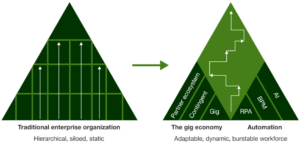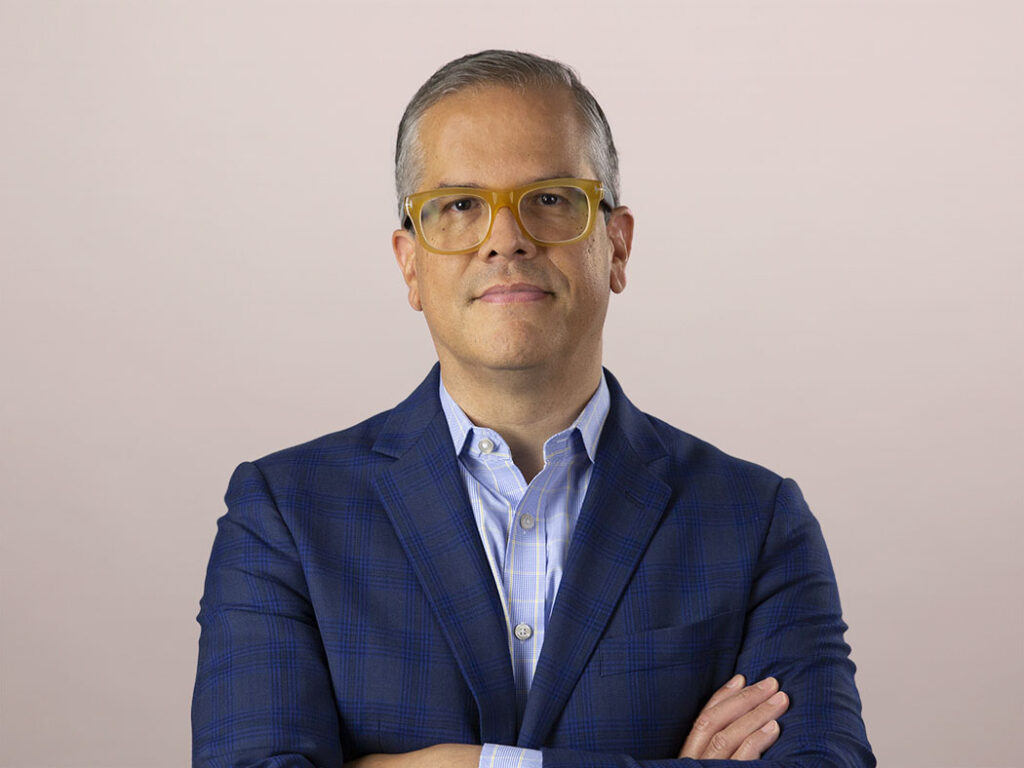The Future Of Work Is An Adaptive Workforce
To Build An Adaptive Enterprise, Build An Adaptive Workforce
The future of work isn’t something that happens to you — it’s something you create for your company and your own career. Unfortunately, C-level technology and business leaders are often uncertain on how to do it. Our recent report, “The Adaptive Workforce Will Drive The Future Of Work,” can establish a North Star for your aspirations — and a blueprint for how to get there.
Adaptive enterprises win by identifying future opportunities and proactively reconfiguring themselves, including their business models, in the face of changing customer and market demands. To become an adaptive enterprise requires significant investments in technology transformation, in culture building, and in setting up structures and processes. For example, an adaptive enterprise must be able to alter its business concept based on insights that improve the company’s odds of fulfilling future customer demand.
As your customers raise the bar on their demands — and shift their preferences more frequently — you must build a delivery organization that’s adaptive, too. This new adaptive workforce taps into technology innovations — particularly AI and automation — to become more flexible, responsive, and productive and to support the broader adaptive enterprise strategy.
The adaptive workforce has three key characteristics:
- Burstable. Adaptive workforces can flex up or down their resources in response to changing conditions by tapping into next-generation labor pools: the talent economy (contingent workforce providers, the gig economy, or employees from the partner ecosystem) and the automation economy (AI, business process management, robotic process automation, and other intelligent software that can complete tasks). See figure below:

The adaptive workforce is burstable, less hierarchical, and composable.
- Less hierarchical. Traditional corporate organizations are extremely vertical and siloed: An employee starts working in one organizational function and continues to do so throughout their entire career at the firm. Now, a “botmaster” who manages bots in the finance department can move to do similar work in HR, contributing and also learning new skills in the process.
- Composable. Swarm teams, which assemble employees from cross-functional groups to destroy silos, drive innovation, and solve problems, exemplify the adaptive workforce. They can be assembled and disassembled as projects complete or as conditions evolve.
But There’s More: Culture, Skills, And Organizational Structure
Aside from organizational innovations, though, there is a deeper level of preparation that’s required to successfully develop an adaptive workforce. The underlying culture, skills, and organizational structures of your company will make or break these future-of-work efforts. Why? It’s necessary but not sufficient to select the right technology and choose the right vendor. But for technology to successfully transform your business, your people, leaders, structures, and values must all be aligned.
Forrester believes there are three dimensions to this problem:
- Individuals need to be fitter. As AI and automation reshape the workplace and the economy becomes more biased toward temporary, contingent, and gig labor, individuals need to be ready to compete. Forrester’s Future Fit framework measures the readiness of everyday employees — and also leaders, who must up their games — in three areas: health (physical, emotional, and psychological); mental (curiosity, agility, and risk); and action (worldview, cooperation/collaboration, and technology readiness).
- Workplaces need to drive excellent employee experiences. A strong employee experience will drive better customer experiences; happy workers lead to happy customers. Most of what makes up employee experience is making progress toward their work goals and having the resources they need to succeed in the work they do every day. Forrester’s Employee Experience Index helps guide improvements in employee experience and measuring progress over time.
- Organizations need to optimize culture, leadership, and structures for AI and automation. The future of work involves human employees working side by side with robots, intelligent machines from AI, automation, and robotics. And in general, your people, leaders, and organization aren’t ready for this revolution. For example, Forrester’s Technographics® data shows that only 18% of global information workers agree with the statement, “My career path in the world of automation is clear to me.” Forrester’s Robotics Quotient helps executives move the needle on these fundamentals, leading to more successful business results.
Investing in these three attributes together drives better readiness. Information workers who aren’t high in any of the three attributes — they don’t score high on Future Fit, Employee Experience Index, or Robotics Quotient — hold much less helpful attitudes about issues such as customer obsession, pride in working for their companies, or innovation. But employees with two or more of these attributes score 3x to 10x higher in their attitudes of cultural readiness.
Whether you hope to prepare your organization for the next recession or to grow faster than you ever have before, adaptiveness is key to your future success in a world of automation and AI. We hope clients will read and download our full report, “The Adaptive Workforce Will Drive The Future Of Work,” to learn more.
J. P. Gownder is a vice president and principal analyst serving CIOs. He leads Forrester’s research on the impact that automation, artificial intelligence, and robotics have on the future of work, the future of jobs, the economy, and CIO strategies. He also covers innovation in the context of disruptive devices and interfaces — from PCs to mobile devices and augmented and virtual reality (AR/VR) to software and intelligent agents — and how these technologies drive improvements in employee experience and business outcomes. Follow him on Twitter at @jgownder.
